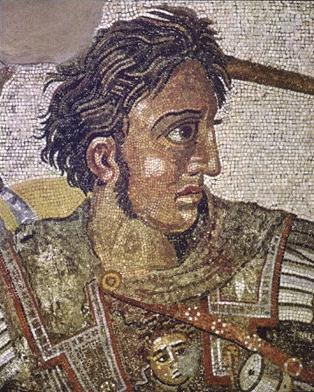Archaeologists discover gemstone carrying portrait of Alexander the Great
 Washington, September 16 : An archaeological team, during excavations in Israel, has discovered a gemstone that has a portrait of Alexander the Great engraved on it.
Washington, September 16 : An archaeological team, during excavations in Israel, has discovered a gemstone that has a portrait of Alexander the Great engraved on it.
The excavations at Tel Dor were carried out by an archaeological team, which was directed by Dr. Ayelet Gilboa of the University of Haifa and Dr. Ilan Sharon of the Hebrew University of Jerusalem.
“Despite its miniature dimensions – the stone is less than a centimeter high and its width is less than half a centimeter – the engraver was able to depict the bust of Alexander on the gem without omitting any of the ruler’s characteristics,” said Dr. Gilboa, Chair of the Department of Archaeology at the University of Haifa.
“The emperor is portrayed as young and forceful, with a strong chin, straight nose and long curly hair held in place by a diadem,” he added.
The Tel Dor researchers have noted that it is surprising that a work of art such as this would be found in Israel, on the periphery of the Hellenistic world.
“It is generally assumed that the master artists – such as the one who engraved the image of Alexander on this particular gemstone – were mainly employed by the leading Hellenistic courts in the capital cities, such as those in Alexandria in Egypt and Seleucia in Syria,” according to the researchers.
“This new discovery is evidence that local elites in secondary centers, such as Tel Dor, appreciated superior objects of art and could afford ownership of such items,” they added.
The significance of the discovery at Dor is in the gemstone being uncovered in an orderly excavation, in a proper context of the Hellenistic period.
This tiny gem was unearthed by a volunteer during excavation of a public structure from the Hellenistic period in the south of Tel Dor, excavated by a team from the University of Washington at Seattle headed by Prof. Sarah Stroup.
Dr. Jessica Nitschke, professor of classical archaeology at Georgetown University in Washington DC, identified the engraved motif as a bust of Alexander the Great.
This has been confirmed by Prof. Andrew Stewart of the University of California at Berkeley, an expert on images of Alexander and author of a book on this topic.
Alexander was probably the first Greek to commission artists to depict his image – as part of a personality cult that was transformed into a propaganda tool. (ANI)